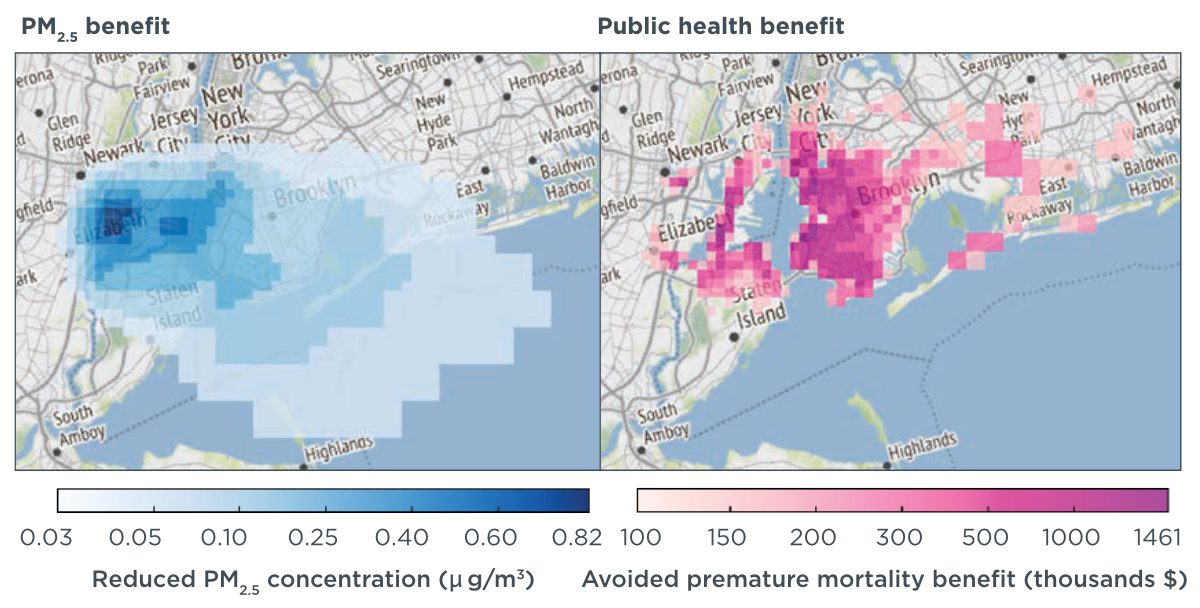Global scrubber washwater discharges under IMO’s 2020 fuel sulfur limit
Working Paper
Electrifying ports to reduce diesel pollution from ships and trucks and benefit public health: Case studies of the Port of Seattle and the Port of New York and New Jersey
Quantifying the emissions reduction and air quality benefits of port electrification can help understand how to improve air quality and benefit public health around ports. To that end, this study combines ICCT’s global online Port Emissions Inventory Tool (goPEIT) with our Systematic Assessment of Vessel Emissions (SAVE) model and estimates the emissions from oceangoing vessels (OGVs), harbor craft, and drayage trucks at both the Port of Seattle and the Port of New York and New Jersey (NY/NJ) in 2019. The authors also modeled the emissions in a “full electrification” scenario that assumes 100% shore power connection for OGVs while at berth in ports and 100% electrification of harbor craft, plus 100% electrification of drayage trucks in the case of NY/NJ. The results for both were then put into the Intervention model for Air Pollution (InMAP), an open-source, reduced-complexity model that estimates the air quality and health impacts of emissions on nearby regions.
The analysis finds that full electrification would bring reductions in emissions of fine particulate matter (PM2.5) of 75% and 69% in the Ports of Seattle and NY/NJ, respectively. Of all electrification technologies, electrifying harbor craft alone could reduce PM2.5 emissions for Seattle by 45% and for NY/NJ by 30%. Using a value of statistical life assumption from the U.S. Environmental Protection Agency, the authors show that the emissions reductions translate to at least $150 million in public health benefits in the area of the Port of NY/NJ. As illustrated in the map below, Brooklyn would receive the largest public health benefits. Although the reduced annual average PM2.5 concentration in Brooklyn would be below 0.2 μg/m3 (less than in other areas) with over 2.5 million people living there, the public health benefits would be over $60 million per year.

Figure. Benefit of reduced annual average PM2.5 concentration (μg/m3) and monetized public health benefits (thousands $) in NY/NJ in the full electrification scenario, with a 0.01° x 0.01° grid.
This paper was updated on February 28, 2023 with the corrections outlined in this notice. The previous version is still available.
